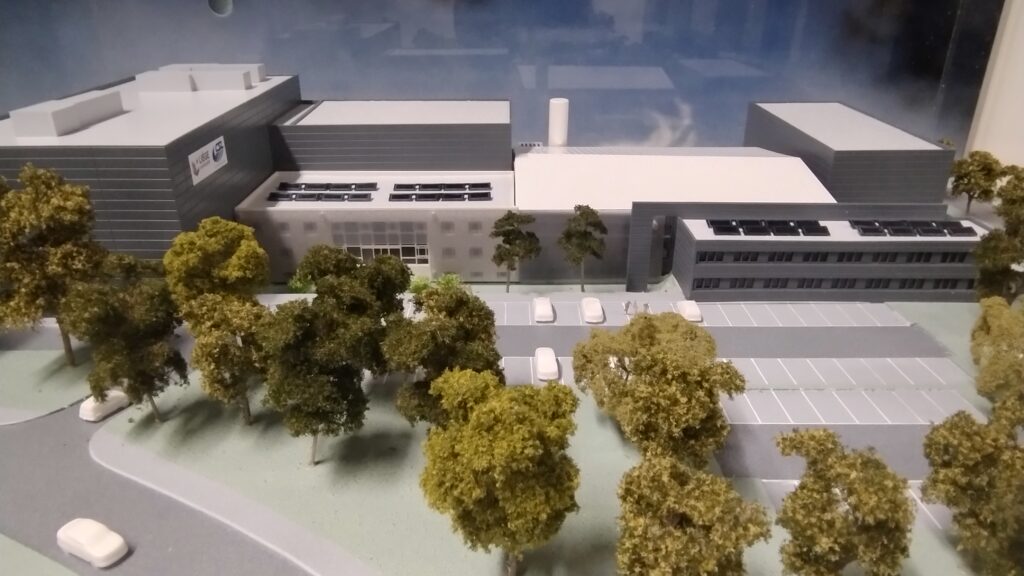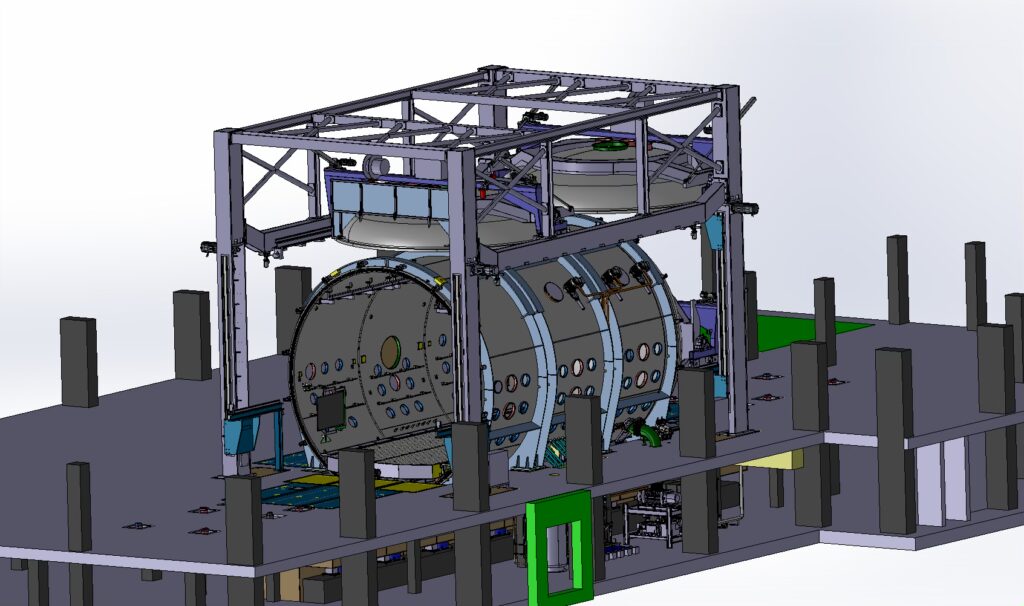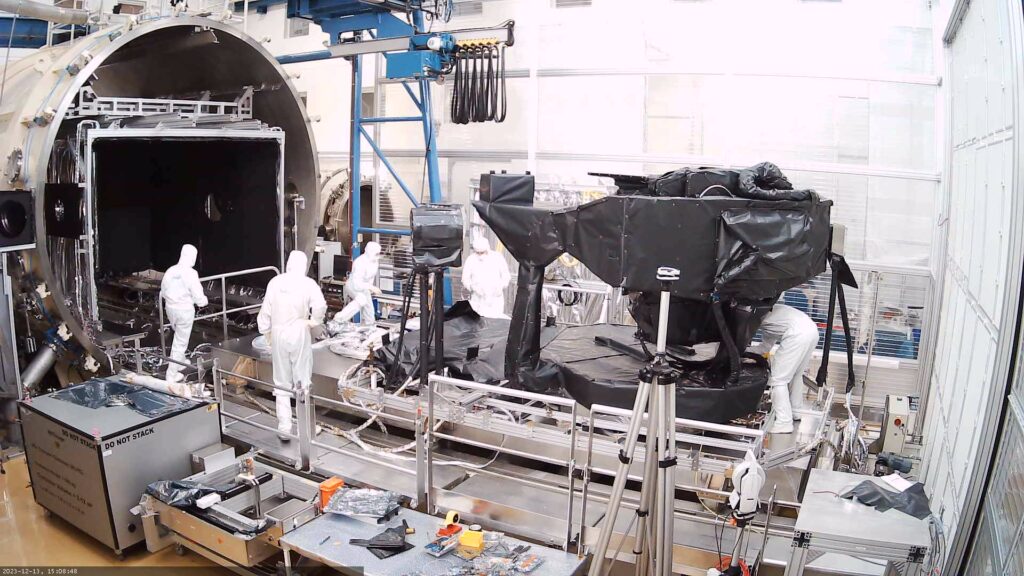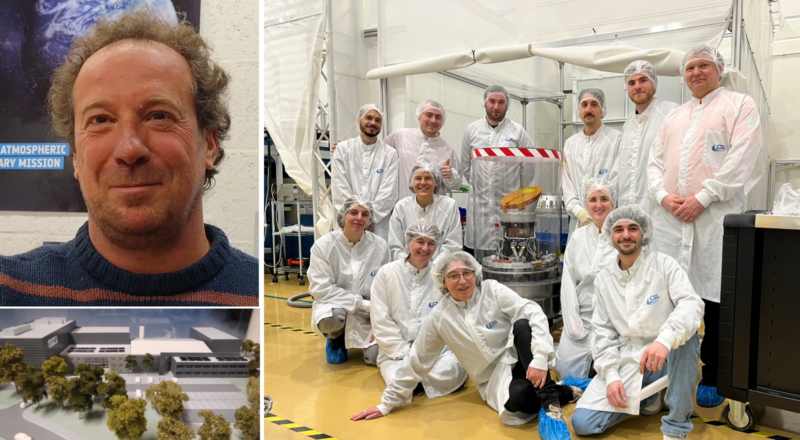Interview with Benoît Marquet, Director of Operations at the Centre Spatial de Liège.
On 22 October, the CSL celebrated its 60th anniversary and launched a project to extend its infrastructure and test capabilities at the Liège Science Park.

« We haven’t really expanded the CSL since the 1990s. On the other hand, the space sector has evolved considerably, and our needs now far exceed the capacity of our facilities. We’re running out of space because customers are coming in with bigger and bigger instruments that require more sophisticated and bulkier test and control facilities. At the same time, we have a large FOCAL-5 tank that is permanently occupied. There is a real bottleneck in Europe in terms of using the tank, which has also become too small » Benoît Marquet
Additional 1580 m2
CSL will be constructing two new buildings on either side of its current facilities:
• A new 580 m2 (12 m high) storage hall for the equipment needed for the tests (support structures, thermal panels, etc.) and the containers used by CSL customers during the test campaigns.
• A new clean room for the integration and preparation of space instruments in a suitably clean environment. This new clean room will be subdivided into an ISO7 section (standard level of cleanliness), measuring 580 m2, and an ISO5 section (optimized level of cleanliness, 100 times greater than that of ISO7), measuring 420 m2. It will also house the new 7 m diameter vacuum tank.
A new test tank: FOCAL-7
The new 7 m diameter vacuum tank will be the largest at the CSL. FOCAL-7 (acronym for Facilité Optique de CAlibration à Liège, 7 for its diameter) will be nearly 14 m long, including a hyper-stable optical bench 12 m long and 4 m wide, laid on a high performance vibration isolation system. The connection to a new nitrogen thermal system and cryogenic loops will enable optical calibrations of future space, scientific or Earth observation instruments to be carried out in the ultra-cold thermal environments required (approaching absolute zero).

The new facilities, which will double CSL’s cleanroom and storage space, are expected to be operational by the end of 2026.
Meeting the challenges of ESA’s future ‘large’ missions
Future European Space Agency (ESA) missions require ever larger telescopes, often in a hyper-cold environment to improve the accuracy of measurements. One example is ESA’s Athena[1] mission, for which CSL has already been consulted.
‘This major investment will enable CSL to strengthen its position as a recognized center of expertise in Europe for the optical calibration of future large-scale European Space Agency (ESA) missions’ Benoît Marquet.
The Einstein telescope at CSL

Université de Liège is heavily involved in preparatory projects for the Einstein telescope (third-generation telescope for the detection of gravitational waves). This new laboratory, called Cristal (CRyogenic and Inertial STAbility Lab), will be in the CSL’s new buildings to benefit from the Centre’s expertise in cryogenics and clean rooms. It will house an additional vacuum tank 3 m in diameter, enabling the E-TEST prototype to be installed for further developments.

60 years of expertise and as many unforgettable memories
CSL has been evolving for 60 years.
« Among the key moments that have marked the last few decades at CSL, I would mention our involvement in the major Herschel and Planck missions, EUCLID and JUNO (NASA), for which we supplied a mechanism that has been orbiting Jupiter since 2016! Our teams are very proud! » Benoît Marquet
« It remains a challenge to maintain a unique position on the international space market. Our strength lies first and foremost in the technical expertise in optics of our staff (engineers and scientists) » Benoît Marquet

A closer look at the CSL’s remarkable facilities
The vacuum tanks (FOCAL: Facilité Optique de Calibration à Liège) of different diameters, which are installed in ultra-clean rooms to simulate the harsh space environment and test the operation of satellites and their instruments. The CSL also has the stimuli and optical calibration systems needed to validate the systems and instruments it designs or that are entrusted to it. The CSL is also developing expertise in coating and surface engineering technologies (micro-texturing, ion beam polishing, etc.).
[1] Athena (Advanced Telescope for High-Energy Astrophysics), scheduled for launch in 2037.


